What games can do for stories is something that simply doesn’t exist in other creative mediums – the opportunity for players to actively participate in the narrative progression and, when done right, feel the weight of their actions during pivotal moments. Some games do this better than others, and one of them just happens to be a Yoko Taro game.
Having first played NieR Automata in 2017, I was floored not only by its stylish combat and pulse-pounding battle encounters that encapsulate PlatinumGames, but also by its unique narrative structure. The way it subtly and significantly layers its overall story with every completion of the game was something I have never really experienced before. Bundled with well-written characters and an emotional, intriguing plot line, Automata ended up being something special.
So, when I first heard Square Enix was remastering the original 2010 title, the precursor to Automata, I knew right then that I had to get my hands on it. Alongside significant visual and gameplay updates, NieR Replicant ver.1.22474487139… has been packaged with new story and gameplay content not available in any other version of the original game. There’s plenty there to incentivize loyal fans to check it out, but it’s also an opportunity for newcomers and Automata players, like me, to finally know firsthand how this game garnered such a strong cult following.
From the onset, Replicant’s story quickly establishes the sombre reality its characters are in, and wastes little time introducing the adversities they face.
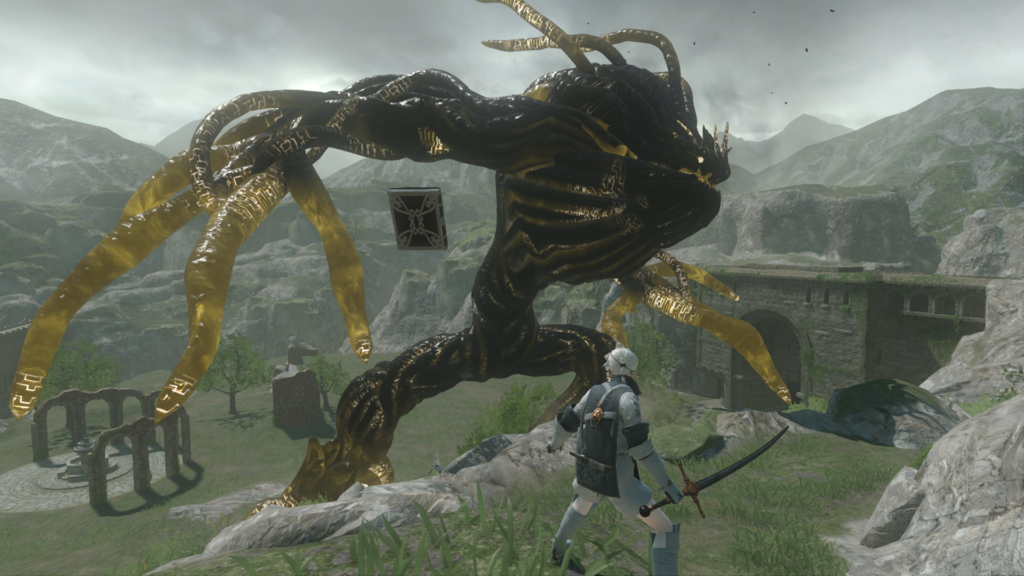
Set on a ravaged Earth far into the future, humanity has been pushed to the brink of extinction. Threatening their survival now are the inky shadowy monsters known as Shades that roam the open lands, and a fatal malady known as the Black Scrawl. It is from here that players take control of a young boy in search of a cure to the Black Scrawl, to which his sister has been plagued with. What follows the protagonist on his burdensome quest is a series of encounters that will slowly unravel the mysteries of how the world of Replicant came to be, and most particularly, how it has consequentially affected its inhabitants.
When an individual is faced with an unfathomable sense of despair, finding reasons to live can be an exhausting ordeal. For some, they can be so wrought by it that it twists their perception of themselves and the world around them. For others that have found salvation, however, they will brave through almost anything to keep it alive. Throughout Replicant’s story, director Yoko Taro explores how this dark and uncomfortable aspect in people transforms them to perform selfish acts in the name of love.
This tragedy-filled journey is especially accentuated with the game’s vocal-heavy music score by composer Keiichi Okabe, with many tracks that are beautiful, melancholic and mysterious all at the same time.
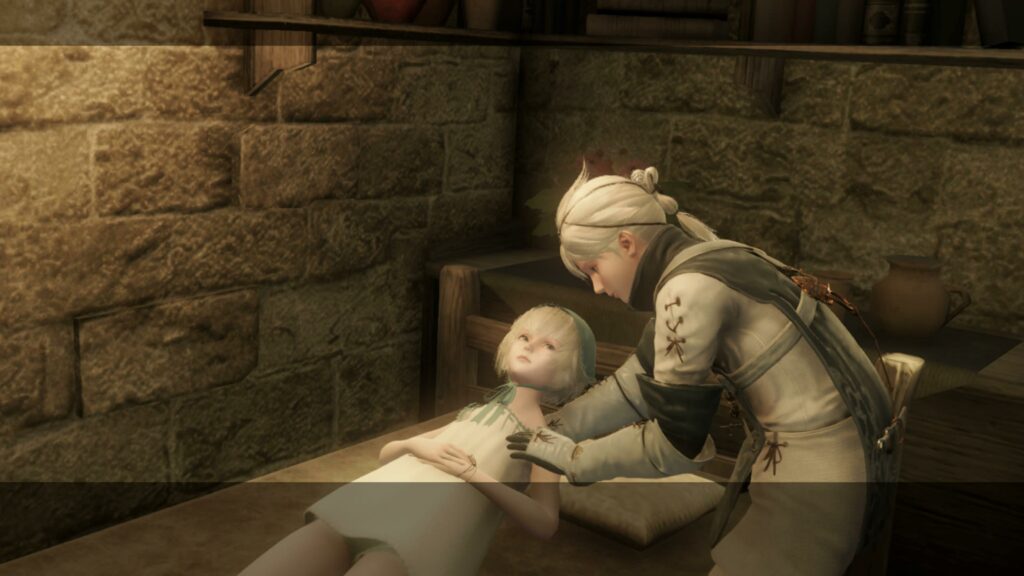
Really, this game is littered with unexpected tragedies, whether it’s from the main story or in the sidequests. Although, knowing Yoko Taro’s style of writing from Automata, some of the twists in Replicant didn’t really come to me as huge surprises, but my appreciation of the story comes less from that and more from understanding how all these developments are thematically relevant. That being said, I will admit there were a few moments that did hit me right in the heart.
Speaking of heart, one of the more enjoyable aspects of following the story in Replicant is listening to the frequent conversations between the boy and his companions whilst going about the game’s world. For instance, one of them happens to be a sentient magical book called Grimoire Weiss; his high-and-mighty personality and slight disdain towards humans contrast the protagonist’s more nonchalant and friendly persona- flavoring the scenarios a little more thanks to their immediate remarks.
In fact, it’s these exchanges in particular that you really get to see how they gradually evolve as characters throughout their journey together. Even though the writing is met with the occasional melodrama (I don’t really fancy it), it’s much appreciated that every single line of dialogue is fully voiced with solid performances. Even all of the non-important NPCs have their own voices, and that feat serves to make Replicant’s world feel just a little more alive.
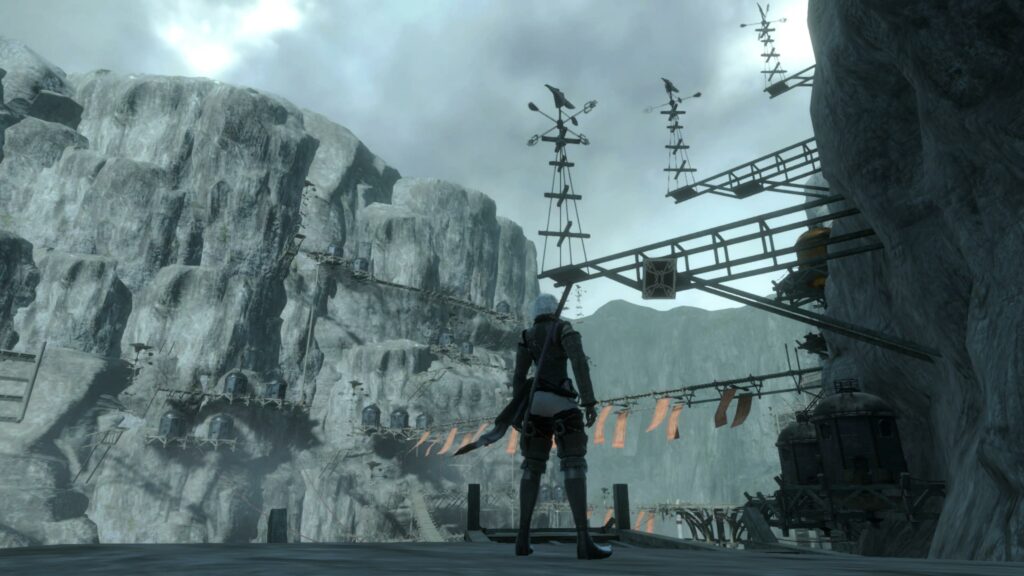
With the remaining few humans having found some amount of peace within their own settlements, they safely proceed with their lives focused on their day-to-day worries. In the outside world are areas reclaimed by nature, but not even the lingering fauna, such as sheep and boar, are safe from the rampant Shades.
As you navigate through these locations in Replicant, you will often encounter individuals —some normal or curious, others bursting with personality— that are in need of assistance. While a majority of these sidequests are made up of simple tasks that require frequent backtracking or loot grinding, there are some that offer interesting scenarios that tie well with the themes presented in the main story.
This really is the kind of narrative experience that is best enjoyed when you know little coming in, but I want to emphasize how essential it is to play through all of Replicant’s multiple endings, which add new and significant context that alters the story and, of course, its conclusion. As with Automata, completing my first playthrough of the game left me feeling like something more should’ve been explored or developed, which is exactly what the subsequent playthroughs will deliver. Eventually, you will view the overall narrative and characters in a new light, which is actually pretty cool to experience.
However, replaying the game multiple times eventually becomes somewhat monotonous as the new story elements are thinly spread across already visited plot beats, and instead concentrated mostly on the final act. I won’t spoil anything, but Automata was able to mitigate this issue, offering a noticeably tighter experience with more to look forward to in every playthrough.
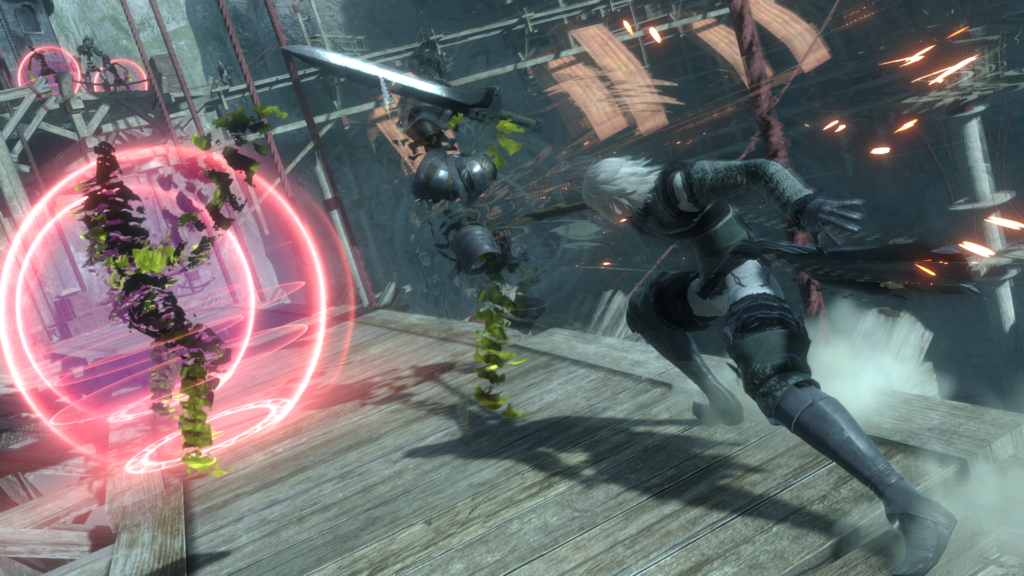
Replicant’s overall game design is a mixed bag, and thankfully its combat — which is what you mostly do in the game — is pretty decent and similar to the system delivered in Automata.
Dealing light and heavy attacks feel fluid and showy, giving you a kind of confidence to jump head-first into a congregation of enemies. When unlocked, you will also be able to freely cast magical spells of varying kinds, including some that are projectile-based. Some are more useful than others depending on the situation and your playstyle, but you will regularly see yourself switching between abilities in order to take out enemies more efficiently.
The action is not completely mindless, however, as enemies will retaliate whether you’re engaging them or the other way around. Dodge-rolling into a sprint becomes second nature during these moments, as it enables you to make great use of the space around you to either make some distance or close the gap between you and the enemies. Chaining that with your attacks, it’s easily the most satisfying mechanic to perform in the game.
While combat doesn’t exactly have that same ‘PlatinumGames polish’, there are enough enemy types and customizable elements in your arsenal for later fights to be engaging. Plus, it’s a straightforward system to easily wrap your head around.
It’s impressive to see all of this happening without the frame-rate ever really tanking, and that’s important to me. I used my PlayStation 5 to run the PS4 version of Replicant, and the results were consistent throughout my time with the game; solid 60FPS with a fixed 1080p resolution.
Lastly, I want to talk about the unique gameplay sections that Replicant borrows from different game genres. They are only accessed in certain points and areas of the game, and some of them, for example, involve changing up the camera perspective to simulate gameplay experiences that you would only find in a side-scroller, a top-down shoot ‘em up and more.
They are bizarre, yet interesting inclusions, and while I didn’t find that much excitement from playing most of them, there were a couple that impressed me. I won’t reveal much, but basically there are sections that involve experiencing bits of the story differently than how you normally would, and I quite enjoyed them.
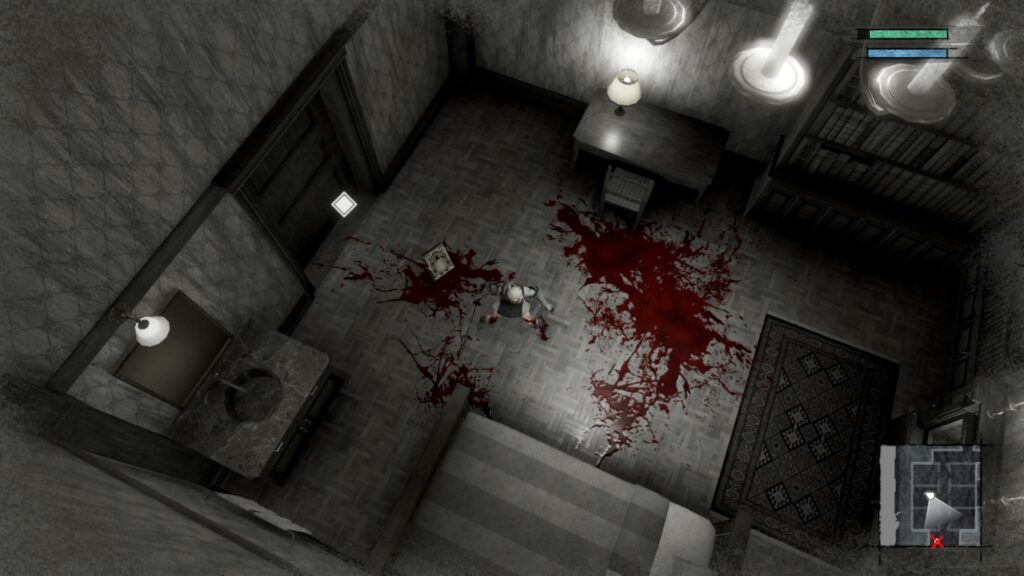
Though my time with NieR Replicant is ultimately marred by repetitive backtracking and grinding that dulls the pacing, the eccentric characters that inhabit the world along with the unusual and twisted events that occur in the story left a notable impression on me that is too stubborn to shrug off so easily.
Complemented with a frenetic combat system and a melancholic musical score, the resulting experience is one that’s unexpected, weird, and unabashedly dark. It’s not perfect by any means, but there’s plenty to appreciate especially for fans of the series.
Disclaimer: Reviewer played the PlayStation 4 version of NieR Replicant ver.1.22474487139… on PlayStation 5.

Recent Comments